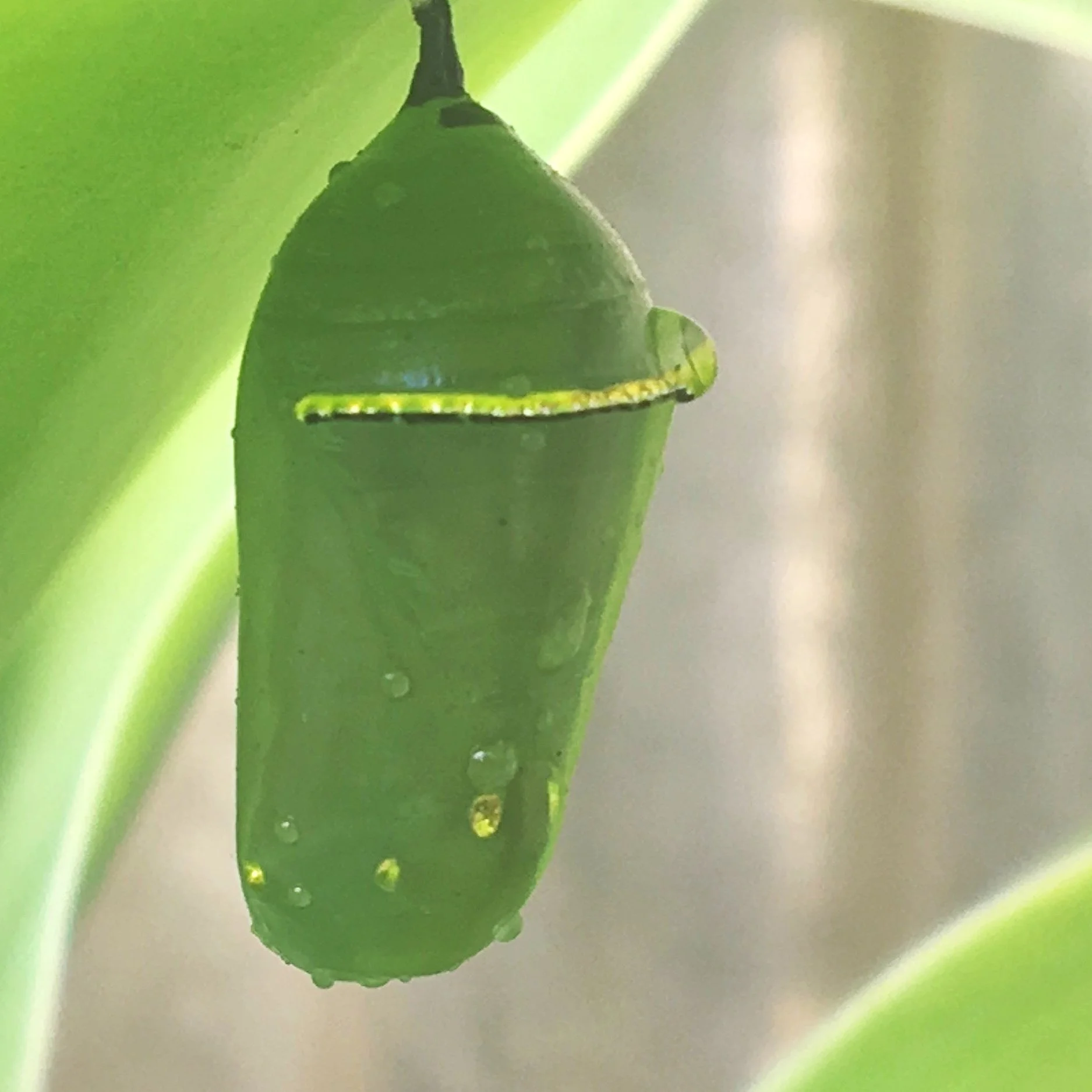Alluring Asclepias
Alluring Asclepias
Asclepias is a diverse family of plants that include deciduous and evergreen perennial flowering forms that are the larval host plant for Monarch Butterflies. Milkweed typically has an erect, clumping form with spherical clusters of star-like flowers that form a crown in lavender, white, pink, red or yellow and bloom early summer to fall. The flowers give way to large seed pods in fall and the plant will self-seed if the pods are not removed prior to splitting open. The monarch caterpillars feed on the plant that will later be home for the hatched butterflies where they will feed on the nectar, rest and lay eggs. Milkweed plants are critical to the monarch butterfly’s survival as the population in North America is estimated to have plummeted by 90% in the last twenty years.
With a bit of knowledge, we can all do a small part in helping restore the population by adding milkweed to our gardens.
Monarch butterfly larvae (caterpillar)
Monarch butterfly pupa (chrysalis)
Newly emerged Monarch butterfly
There are two factors to be considered when planning to help monarchs.
In California, native milkweeds go dormant in fall triggering monarch butterflies to migrate south on schedule. The problem that can arise with non-native Asclepias is that many are evergreen and can interfere with the migratory cycle. Given the continuous food source provided by these species, butterflies and caterpillars linger and continue to feed, breed and lay eggs. Cutting back non-native Asclepias in fall to 4-6” can help force the butterflies to migrate and aid in the prevention of the second condition, the development and spread of the parasite Ophryocystis elektroscirrha
The microscopic parasite Ophryocystis elektroscirrha, or OE, infects the monarch butterfly and causes reduced body mass, lifespan, mating success, deformed wings and impaired flight ability. The parasite lives on milkweed in the form of spores. They attach to the monarch butterfly abdomen and wings and are deposited on leaves they visit. When caterpillars hatch and begin eating the plant, they ingest the OE which can be carried with them as they metamorphize into an adult, infecting its eggs and the next generation of larvae. When Asclepias die back (or are cut back) in winter, the parasite dies with the plant and the new growth in spring will be parasite free. It is estimated that 30% of the monarchs that over-winter in California are infected.
Asclepias speciosa: 2-4’x 1-2’ Native, also known as Showy Leaf Milkweed, with large, oval velvety, blue-green leaves with showy clusters of violet-piink colored star-like flowers that look like small crowns with fragrant blooms. Deciduous
Asclepias tuberosa: 2-4’ x 2-4’ Native to Missouri, also known as Butterfly Weed, it has wide clusters of waxy, bright orange to yellow 2 ½” flowers on deep green, narrow, lance-shaped leaves that line the stem. It does not contain the milky latex sap similar to other milkweed. Deciduous
Asclepias are great for bird and butterfly gardens, cottage gardens, meadows, mass plantings, beds, borders and naturalized areas. The blooms are excellent as cut flowers and the seed pods are valued for dried flower arrangements. Hummingbirds, butterflies, bees and other beneficial insects are attracted to them.
Culture: Plant in full sun in well-drained soil, rich in compost matter with regular summer water. It is drought tolerant once established. Fertilize in spring and summer and divide large clumps in the fall. Carefully consider where you are initially plant, as many of the species have deep taproots and are not successfully transplanted. They are considered to be pest and disease free, as well as deer and rabbit resistant. They are very attractive to aphids, which are easy to spray off with a hose or simply wipe or brush them off the stems. We advise against using any (including organic) pest control products as they can hurt the caterpillars, larvae and eggs. You may want to avoid planting Asclepias close to vegetable beds that may be especially susceptible to aphid infestation. If consumed, various Milkweeds are toxic to humans and animals and the milky sap cause skin irritation for some.
Asclepias curassavica ‘Red Butterfly’: 30” X 30” Non-native Tropical Milkweed has umbrella-shaped clusters of bright scarlet with yellow crown flowers with deep green elliptical-shaped leaves that line the stem. Native to South America. Cut back in fall.
Asclepias fasicularis: 2-3’ x 2-3’ Native to the west and southwest, also known as Narrowleaf Milkweed, it is considered to be the most important host plant for Monarch butterflies. 2” clusters of lavender tinted white star flowers with distinctive green, long, narrow pointed leaves on many branching stems. Deciduous.
Asclepias curassavica ‘Silky Deep Red’: 30” x 30” Non-native Tropical Milkweed has broad, umbrella-shaped clusters of deep red flowers with yellow hoods on deep green elliptical-shaved leaves line the stem. Native to South America. Cut back in fall.









